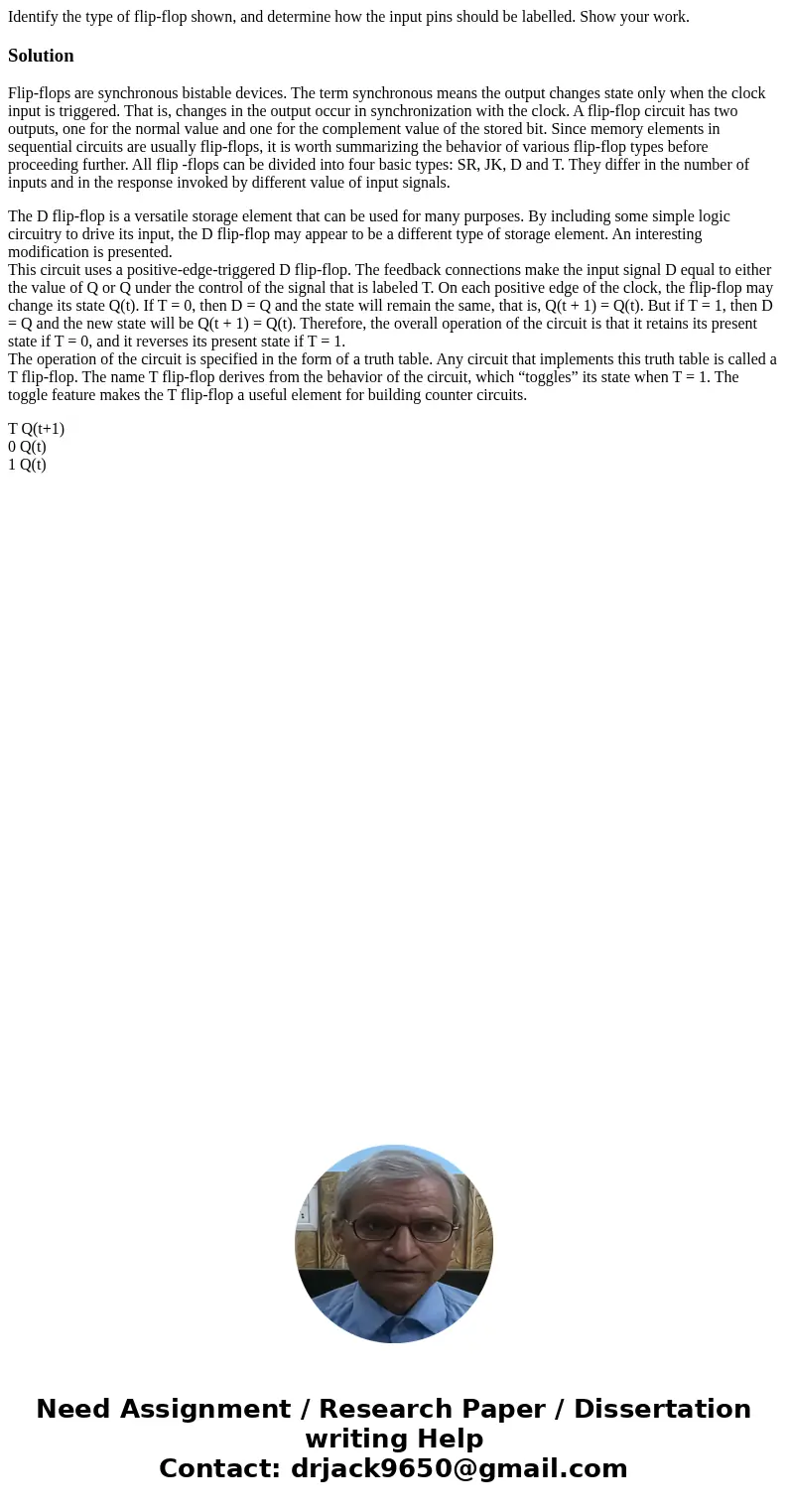Identify the type of flipflop shown and determine how the in
Identify the type of flip-flop shown, and determine how the input pins should be labelled. Show your work.
Solution
Flip-flops are synchronous bistable devices. The term synchronous means the output changes state only when the clock input is triggered. That is, changes in the output occur in synchronization with the clock. A flip-flop circuit has two outputs, one for the normal value and one for the complement value of the stored bit. Since memory elements in sequential circuits are usually flip-flops, it is worth summarizing the behavior of various flip-flop types before proceeding further. All flip -flops can be divided into four basic types: SR, JK, D and T. They differ in the number of inputs and in the response invoked by different value of input signals.
The D flip-flop is a versatile storage element that can be used for many purposes. By including some simple logic circuitry to drive its input, the D flip-flop may appear to be a different type of storage element. An interesting modification is presented.
This circuit uses a positive-edge-triggered D flip-flop. The feedback connections make the input signal D equal to either the value of Q or Q under the control of the signal that is labeled T. On each positive edge of the clock, the flip-flop may change its state Q(t). If T = 0, then D = Q and the state will remain the same, that is, Q(t + 1) = Q(t). But if T = 1, then D = Q and the new state will be Q(t + 1) = Q(t). Therefore, the overall operation of the circuit is that it retains its present state if T = 0, and it reverses its present state if T = 1.
The operation of the circuit is specified in the form of a truth table. Any circuit that implements this truth table is called a T flip-flop. The name T flip-flop derives from the behavior of the circuit, which “toggles” its state when T = 1. The toggle feature makes the T flip-flop a useful element for building counter circuits.
T Q(t+1)
0 Q(t)
1 Q(t)

 Homework Sourse
Homework Sourse